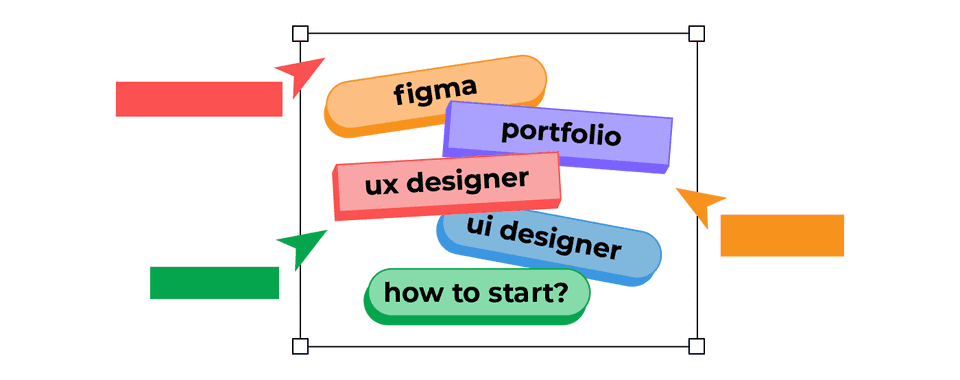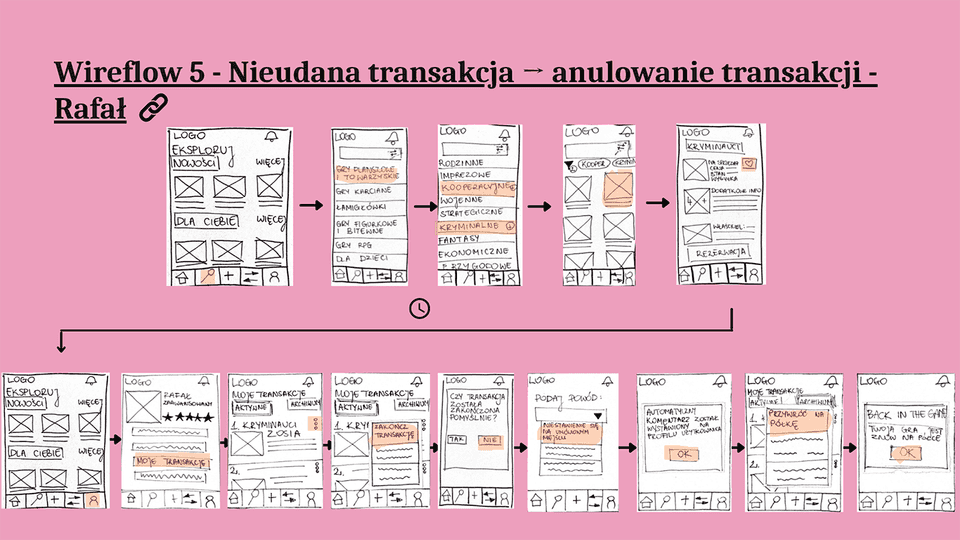How to Get That First Product Designer Job
2 years ago I was an IT administrator. That is when I decided to work on my career change. Eventually, I became a product designer. Here is my guide on how to become a product designer and get the first job with no experience. What is a product designer roadmap? How to work on your first design portfolio? Let me answer all these questions and dispel common doubts.

My road to a Product Designer in numbers
- 17 UX/UI-related books read
- 10 months of intense studies (October 2021 - July 2022)
- 9 Instagram accounts I follow
- 5 podcasts I listen to
- 4 people collaborating on 1 project
- 3 projects on Behance
- 2 UX/UI newsletters I subscribe to
- 2 years of sending out CVs
- 1 Bachelor’s Thesis
- 1 job interview
(Not really) long story short
I guess my Product Design journey started with studying IT & Econometrics. Although, at first I thought I would become a developer. And I was actually into it. I even got an internship in the IT department of this huge corporation. But it wasn’t a fit. I worked as an IT administrator, and while studying I thought it was a great opportunity, the closer to the graduation I got, the more I thought I couldn’t do that for the rest of my life.
Then I came across the term “user experience design” and decided to dig deeper into it. And let me tell you, once I decided to lean into it, I never looked back. I wrote a thesis on UX Design, then attended postgraduate studies on UX Design/Product Design at SWPS University, where I learnt from people who actually work in the field. Eventually, I was hired as a Junior Product Designer @ Bright Inventions.
UX vs UI vs Product Design - what is all of that?
Ah yes, the plethora of titles: UI Designer, UI/UX Designer, Product Designer, UI/UX Unicorn, Information Architect, UX Writer, Interaction Designer, UX Researcher, UX Developer, Motion Designer, Visual Designer, UX Strategist etc. The thing is you don’t need to worry about it now. Once you get to know the field and the whole design process, you’ll learn about the product specialisation and the misuse of said titles in the job descriptions. For now, just learn to differentiate UI from UX and you'll be fine.
OK, so where should I start?
First of all, start by reading about this. Get to know the subject. Learn about the basics - such as Nielsen’s 10 heuristics, UX Laws, learn users’ behaviour (how people perceive things, how they read online - or rather how they don’t actually do that). Get to know the tools. Learn about the UXD methods and processes. A book written by Steve Krug “Don’t make me think” is a great starter (some insights from this book you may find in another blog post written by Iza).
Along with this book, you’ll find recommendations of Don Norman’s “The Design of Everyday Things”. One of my favourite books ever. While the first one is more about the users as we know them - web users, the second one is about user experience in general. I remember when I first came across the term “Norman’s door” and was absolutely fascinated by the whole concept and how user experience can be applied to everyday situations.
Product Design is such a broad topic - I don’t know where I can get my hands on
By now, you should have a good idea of what User Experience Design is all about, but you might find yourself overwhelmed by the amount of the information. It’s a good idea to have it structured by a credible course. There are many of them on the market, but you should look for the one that has a project based structure. Something that will enrich your portfolio and give you some experience you don’t currently have. Take it from me.

One of the workflows I designed while learning.
Here are some courses I can recommend:
https://www.digitaldesigner.pl/
https://www.coursera.org/professional-certificates/google-ux-design
https://www.interaction-design.org/courses
I don’t have the tech experience / I can’t draw
THAT’S FINE. Honestly, you don’t have to have a diploma in Computer Science or be a graduate of Fine Arts to be a good UX Designer/Product Designer. There aren’t many traditional paths to become a Product Designer. Psychology, sociology, marketing, anything to do with people or research, all of those fields will come in handy during the UXD process. I’m sure whoever reads that, no matter the background, there is something in your experience that you would easily be able to put in practice in this field. Just stop and think about it.
You see, the essence of user experience design is that it is user centred, or human centred if you like. So any experience of yours, involving human interaction or problem solving, is good enough. Product Design is not all about pretty interfaces or complex interactions. It is the process that counts. Maria Rosala and Rachel Krause summed it up perfectly in their report on UX Careers for Nielsen Norman Group:
Make a list
If you’re considering a transition into the UX field, instead of simply thinking about UX skills and knowledge you have, make a list of what knowledge and skills you have acquired in your previous role(s) that can be applied to working in UX.
Build your product design portfolio
“You just said I don’t have to draw, and now you’re telling me to build a portfolio. Based on what?” Show the process of resolving problems. That website or app you use everyday, which is driving you nuts, but you didn’t find a better alternative or you’re forced to use it - redesign it, explain the problem, why isn’t it working? What could be done better? Or maybe you have seen someone else struggling with a product? Did your mum have a problem paying for something online? Solve her problem!
Another thing about being a UX Designer is that you can’t be afraid of asking questions. You need to ask them to understand the problem better and empathise with your users. Do research regarding a subject that is close to your heart. What are the insights you learnt from that research? What is the biggest pain of your examinees (users)? How can it be improved? You get the idea.
Best resources to learn about product design
I’m going to leave you with some links, which will help you dig deeper into the subject:
- https://www.nngroup.com/ - A great source of information made by two godfathers of UX - Jakob Nielsen and Don Norman. If you feel overwhelmed with the amount of the articles and videos, I recommend the series about UX slogans for starters (https://www.nngroup.com/videos/you-are-not-user-slogan/)
- https://lawsofux.com/en/ - another great source of how people perceive things and all the good practices worth taking into account while designing interfaces
- https://www.uxpin.com/studio/, https://xd.adobe.com/ideas/process/, https://www.interaction-design.org/literature, https://uxdesign.cc/ - many, many articles, videos which will give you a good start in understanding what’s what and some tips&tricks
- https://www.a11yproject.com/ & https://www.w3.org/WAI/standards-guidelines/wcag/ - all about the accessibility aspect of UXD
I’m not going to sugarcoat it, it’s going to be hard getting that first job. Now more than ever. And you’ll get frustrated with the amount of rejection emails saying you lack experience. Been there, done that. But those things I wrote about - they definitely helped me with gaining confidence in the field and standing out amongst others. Keep in mind that everyone has their own story and you should focus on you, don’t compare yourself and just keep on learning. Good luck!
